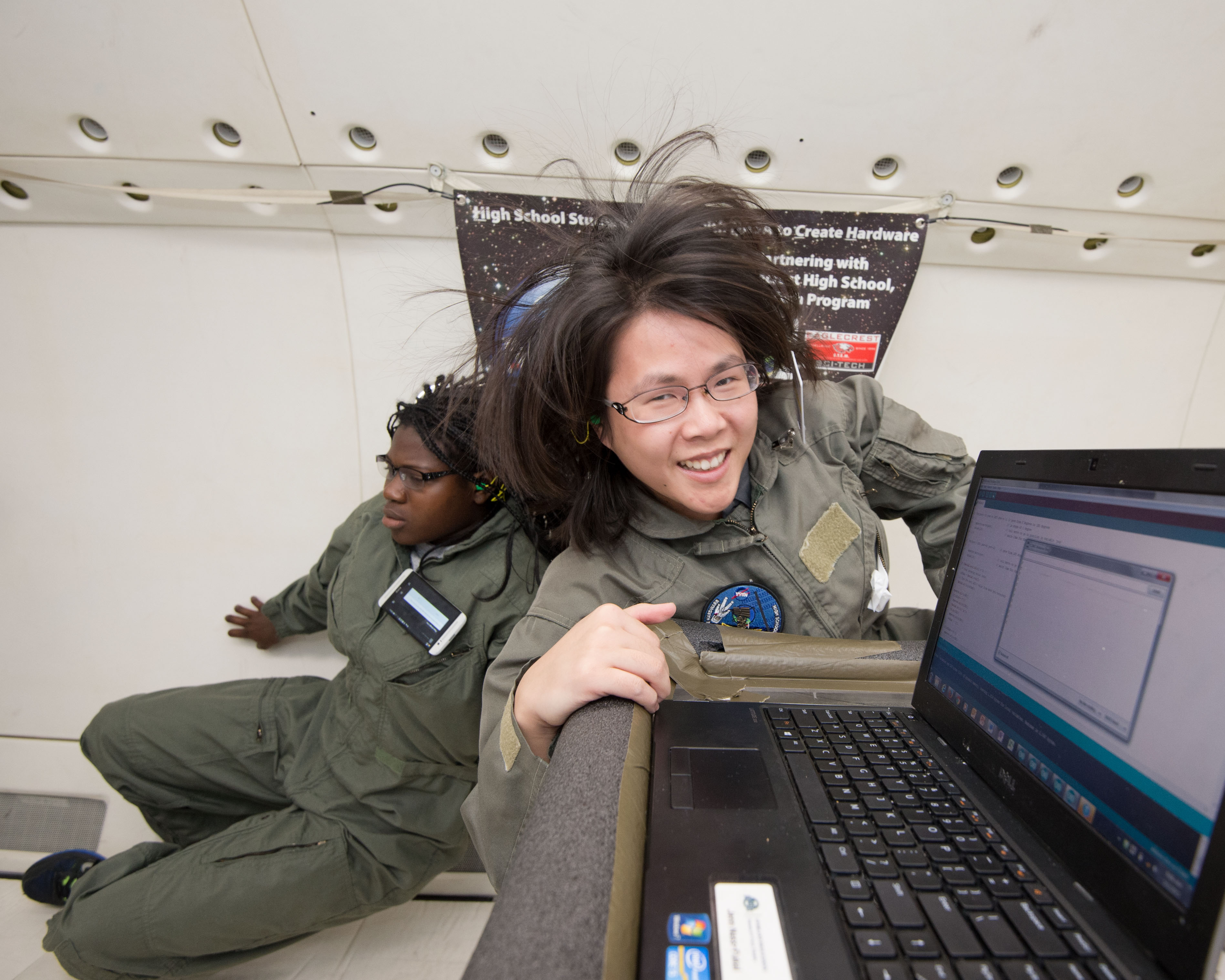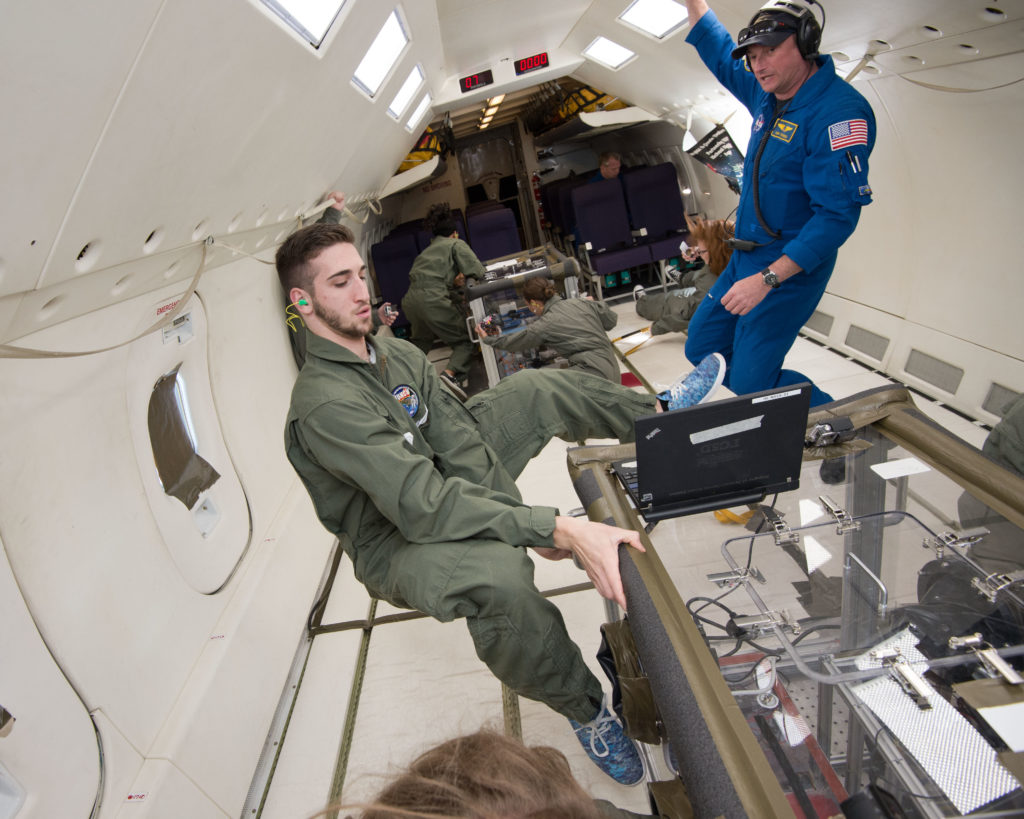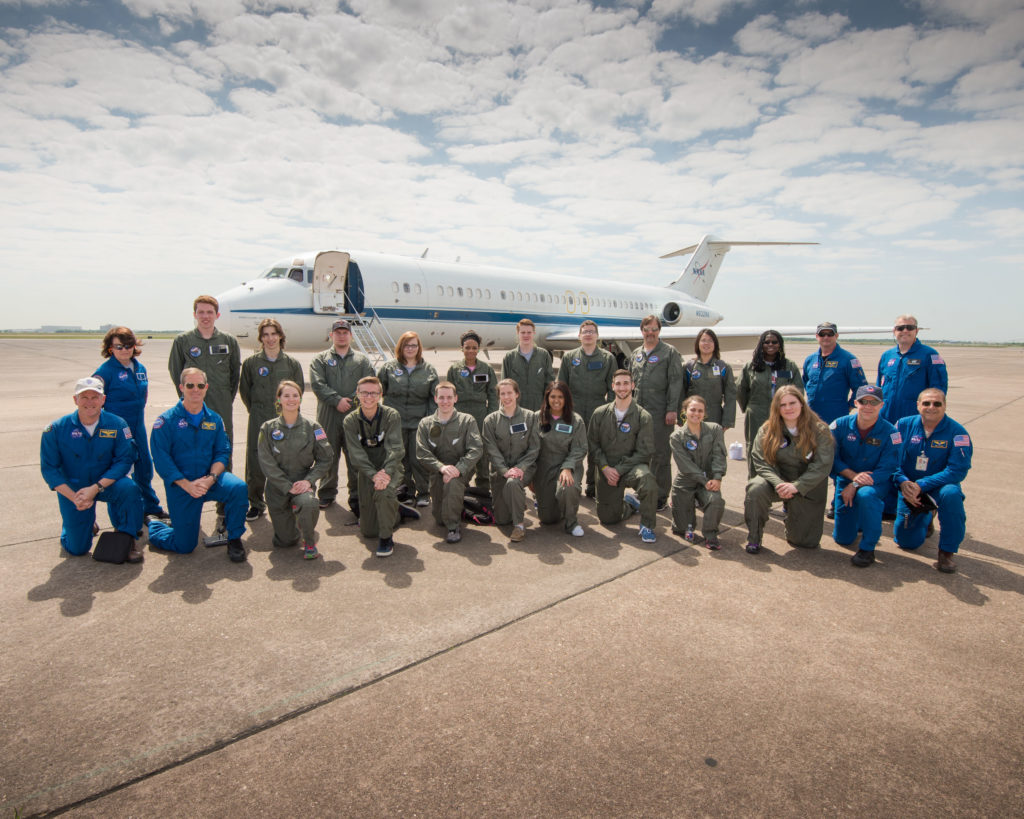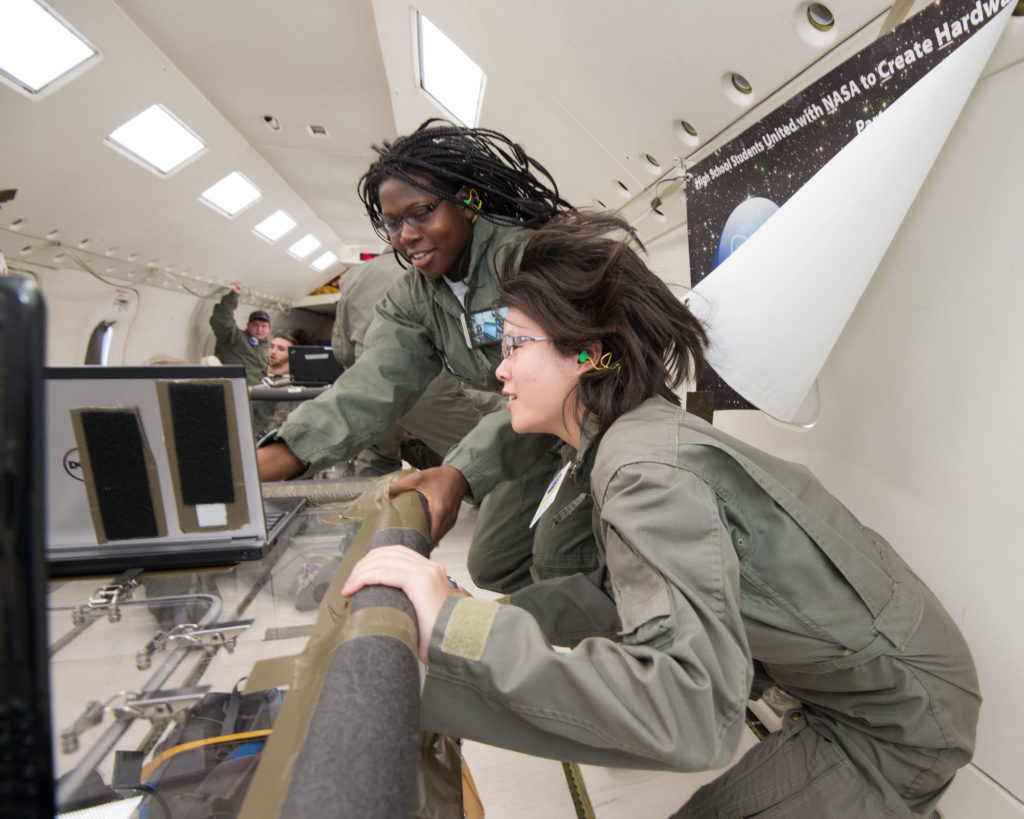
My Day in Zero-G
By Mariel Rico, NanoRacks Operations Engineer
When I was told that I had the opportunity of flying on NASA’s Weightless Wonder, I was in awe. If I was to never be an astronaut, this would be the closest thing I would ever have to experiencing space! The experience truly lived up to its expectation.
The day started bright and early at 7:30AM at Ellington Field in Houston, TX. I had already had breakfast (having something, but not too much, in your stomach helps you from getting sick) and was being prepped by the Overland High School team on how their experiment ran. The Overland team had engineered a contraption to test if house flies could orient themselves in microgravity.
OUR FLIGHT CREW AT ELLINGTON FIELD!
A house fly was placed into a test tube, and a series of test tubes were attached to a servomotor. When the house flies started to experience microgravity, the servo motor would turn giving the house fly an attempt to fly into a bigger container filled with yummy fly bait. This experiment was a proof of concept that flies would be able to orient themselves despite the confusion of microgravity, and therefore could act as an automated pollination device. Can you imagine how beneficial that would be in space? Currently, astronauts spend a lot of time pollinating plants by hand with a qtip, so one can only imagine how happy astronauts would be if houseflies were doing that for them!
After being briefed by the Overland ground team on the mechanics of their experiment, Jazzmyn (one of Overland’s engineers) and I headed to our medical briefing. There we were given tips on how to prevent getting sick, like not looking out windows (because that confuses your brain) and allowing our bodies to adjust by not moving through the first few parabolas (more on that later). We were also given medicine that slows down our inner ear, which meant our sense of balance would be reduced. Once we were done with the medical briefing, our ground crew gave us their last words of advice and we boarded the plane.
I WAS ABLE TO HELP RUN EXPERIMENT IN ZERO-G.

The NASA Reduce Gravity Flight Program utilizes a C-9B aircraft. While the outside of the plane is the same as any other C-9B, the cabin has been stripped of most of its seating to provide room for the glove boxes that hold the experiments. The cabin is also padded from floor to ceiling to provide a soft landing because without gravity, you can end up anywhere!

After flying to the correct altitude, the HUNCH teams were given the go to add extra equipment to their previously mounted hardware glove boxes. This included things like cameras and laptops. Once set-up, everyone lies down (which helps stabilize your inner ear), prepares themselves for the experience of a lifetime!
This is where those parabolas come in. You see, if anyone tells you that there is a microgravity chamber on Earth, they are lying. You can’t just turn off gravity. However, you can simulate it when a plane is flying in a parabola pattern. When the plane is going over the arc of the parabola, the centrifugal force exerted on the plane cancels out with the forces of gravity, allowing you to float. Then when the plane starts to come out of its dive, and starts to climb again passengers experience about 1.8G, which is a lot like being on a roller coaster (this is also the part where people are more to becoming sick).
The sensation of microgravity is magnificent. For 20 seconds, the forces of gravity are at bay and you have a sense of lightness. The amount of force you normally use to do simple things like stand up can throw you to the other side of the plane. The entire experience was incredibly relaxing and surreal. I spent a majority of these twenty-five precious parabolas hovering between the floor and ceiling of the airplane, enjoying the extra space because I was not longer limited to the ground. I watched water in a bottle flow up to the top because it was free from gravitational pull.
To be honest, the entirety of the experience felt like a dream. As I type this blog entry, I still can’t believe that I was able to experience something so exciting yet calming. Everyone on the flight had an incredible time, and I can’t wait to see the results of their experiments!

